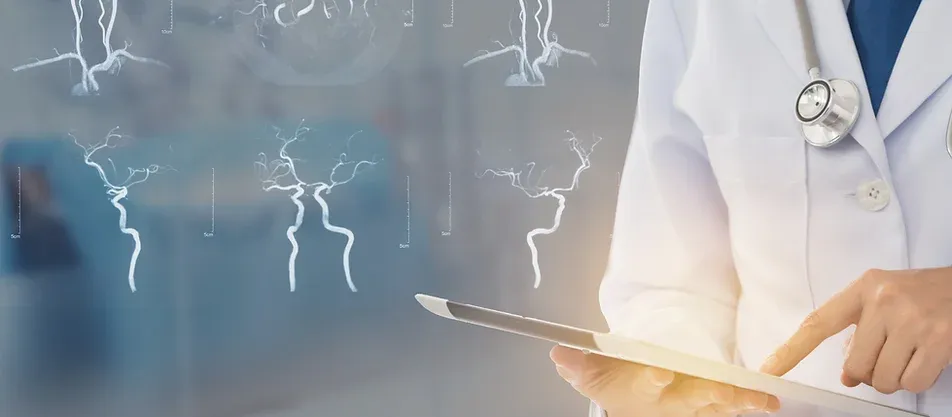We Treat
At our practice, we specialize in diagnosing and treating a wide range of neurological conditions. From chronic headaches and migraines to epilepsy, multiple sclerosis, and Parkinson's disease, our expert team is dedicated to providing personalized care and advanced treatment options to improve patients' quality of life.
Neuro-rTMS Center
Neurological conditions we treat :
- Headache.
- Headache disorders are characterized by recurrent headache and are among the most common neurological disorders.
- Movement disorders.
- Movement disorders are a group of neurological conditions that may result into either excessive involuntary movements or slow movement and gait impairment.
- Epilespy.
- Globally, an estimated 5 million people are diagnosed with epilepsy each year, while 2–5% of the general population will suffer an epileptic seizure during their lifetime.
- Cerebrovascular disorders.
- Cerebrovascular disorders refer to a group of conditions that affect the cerebral blood flow as a consequence of blood vessel narrowing (stenosis), clot formation (thrombosis), or blood vessel rupture (hemorrhage).
- Neurocognitive disorders.
- Neurocognitive disorders are a category of neurological disorders that primarily affect cognitive abilities including learning, attention, memory, perception, and problem solving.
- Other central or peripheral nervous system disorders.
- Other central nervous system disorders that a neurologist is confronted with in daily practice include demyelinating disorders.
Headache disorders are characterized by recurrent headache and are among the most common neurological disorders. Headaches are classified in primary headache disorders, including migraine, tension-type headache, and cluster headache, and secondary headaches, that comprise an epiphenomenon of a multitude of underlying neurological or systemic disorders.

Movement disorders are a group of neurological conditions that may result into either excessive involuntary movements (such as tremor, ataxia, dystonia), or slow movement and gait impairment, as is the case with Parkinson’s disease and atypical Parkinson syndromes. The differential diagnosis is complex, but today there are several available therapies that have been proven highly effective in controlling patient symptoms.

Globally, an estimated 5 million people are diagnosed with epilepsy each year, while 2–5% of the general population will suffer an epileptic seizure during their lifetime. The differential diagnosis of epilepsy requires both neuroimaging and electrophysiological studies (electroencephalogram – EEG), while tailored treatment and regular patient monitoring are required for optimal seizure and disease control.

Cerebrovascular disorders refer to a group of conditions that affect the cerebral blood flow as a consequence of blood vessel narrowing (stenosis), clot formation (thrombosis), or blood vessel rupture (hemorrhage). Among the most common cerebrovascular disorders are stroke, transient ischemic attack (TIA), carotid artery disease, and vascular dementia. Primary and secondary prevention strategies include pharmacotherapy, lifestyle modification and strict management of cardiovascular risk factors.

Neurocognitive disorders are a category of neurological disorders that primarily affect cognitive abilities including learning, attention, memory, perception, and problem solving. They include mild neurocognitive impairment, delirium, and major neurocognitive disorders (dementias). Although Alzheimer’s disease is the most common neurocognitive disease worldwide, there are several other forms of dementia that should be distinguished from Alzheimer's and require careful differential diagnosis for appropriate management.

Other central nervous system disorders that a neurologist is confronted with in daily practice include demyelinating disorders, such as multiple sclerosis, and degenerative disorders, such as motor neuron disease. Peripheral nervous system disorders also include a wide spectrum of diseases, ranging from different types of neuropathies, myopathies and diseases that affect the neuromuscular junction, such as myasthenia gravis.

Neuro-rTMS Center
Telephone: +30 2107780853
Mobile: +30 6944328713
Address: Papadiamantopoulou 24B, 115 28, Athens
Email: neurortms@gmail.com
Contact Now